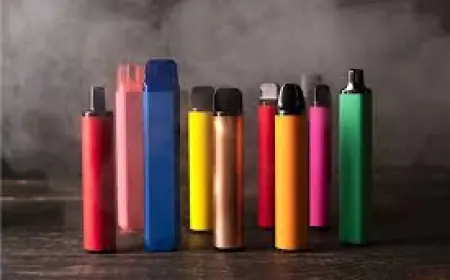Understanding PPC Advertising - Tips for Maximizing ROI
PPC advertising can be a powerful tool for businesses looking to boost their online presence and drive conversions. Contact us now!!

Pay-per-click (PPC) advertising can be an excellent way to draw relevant visitors to your website with an affordable budget. Unlike traditional forms of promotion like newspaper ads or billboards, PPC only costs you when an ad is clicked upon - making it the ultimate targeted solution!
To maximize the success of your pay-per-click (PPC) campaign, it is essential to take into account these aspects:
Keyword Research
As a highly measurable form of advertising, pay-per-click (PPC) ads can provide businesses with impressive returns on investment (ROI). However, reaching maximum ROI requires careful work.
Keyword research is at the core of every successful campaign. Use tools like Google Ads' Keyword Planner to discover new keywords, plan campaigns, and obtain approximate performance data estimates.
Businesses can utilize data analytics to make smart choices and increase campaign efficiency. This means boosting ads that are performing well while pausing or changing ones that are not, thus creating campaigns with optimal returns on investment (ROI). You may also leverage ad extensions for increased visibility of PPC ads, which is particularly beneficial to e-commerce advertisers.
Ad Copy
Adopting keywords and copy that maximize ROI are two keys to successful advertising. Use keyword research tools to identify related terms that coincide with your products and services, then utilize those terms when optimizing ad copy with targeted ad copies and relevant landing pages containing eye-catching call-to-action callouts. Monitor and adjust campaigns regularly until they bring you optimal returns on your investment.
PPC ads provide instant visibility and traffic to your website, unlike SEO, which takes time to produce results. They're also flexible, so you can control your budget and choose between manual or automated bidding strategies - for instance, Snickers ran an ad campaign targeting misspelled search terms like "snickers" and "snicker bars," helping increase click-through rate (CTR) while decreasing the cost per click costs.
Ad Formats
Pay-per-click (PPC) advertising involves paying a fee every time someone clicks your ad, making it an effective form of search engine marketing (SEM) that can drive visitors directly to your website or social media page.
Ads may consist of text, images, video, or a combination thereof. They can be displayed on websites, mobile apps, and social media marketing platforms, and they can even be used to target visitors who have previously visited your website or app through remarketing campaigns.
PPC ads offer an efficient and measurable way to reach target audiences and generate leads or sales. To maximize return on investment (ROI), marketers should periodically assess their campaigns and adjust as necessary based on monitoring individual ad elements as well as campaign goals.
Ad Scheduling
Control how often your ads will appear to your target audience, expand reach, and maximize return on investment (ROI).
PPC marketers always conduct A/B tests before launching ads that use Pay-per-click advertising (PPC). Even small changes to one element of a campaign can have profound effects on its success.
Ad scheduling is a feature within Google Ads that enables you to control when your ads run, such as when they perform best during certain days or times of the day. By making adjustments in this manner, your ads will only appear during times they perform best and thus increase ROI while freeing you up for other marketing tasks, such as measuring their effectiveness.
Ad Performance
An effective ad is key to increasing return on investment (ROI). By using tools to measure performance, it's possible to identify campaigns, keywords, audience groups, or individual ads that perform better than others and redistribute your ad spend towards these strategies to maximize ROI.
Ad performance depends heavily on creating high-quality landing pages for PPC ads. If a prospect clicks through and ends up at a site that does not match their search query or offer, they are likely to leave quickly without engaging further with it.
Analyzing data and understanding peak times for your audience allows you to use PPC ads at just the right times to target them with specific advertisements. This technique, known as dayparting, is a highly effective method for increasing ROI.
Conclusion
PPC advertising can be a powerful tool for businesses looking to boost their online presence and drive conversions. By implementing the right strategies and continuously optimizing campaigns, companies can maximize their return on investment and achieve their marketing goals. It is crucial to monitor performance metrics regularly, test different ad copy and targeting options, and stay updated on industry trends to stay competitive in the digital landscape. With a well-thought-out PPC strategy in place, businesses can reach their target audience effectively and see a significant improvement in their ROI. Take these tips into consideration and start optimizing your PPC campaigns today to see real results!
What's Your Reaction?
 Like
0
Like
0
 Dislike
0
Dislike
0
 Love
0
Love
0
 Funny
0
Funny
0
 Angry
0
Angry
0
 Sad
0
Sad
0
 Wow
0
Wow
0







































![UAE District Cooling Market [2023-2028] – Future Outlook, Latest Insights Data and Top Companies](https://s3..amazonaws.com//uploads/images/202303/image_430x256_640b00724e170.jpg)







